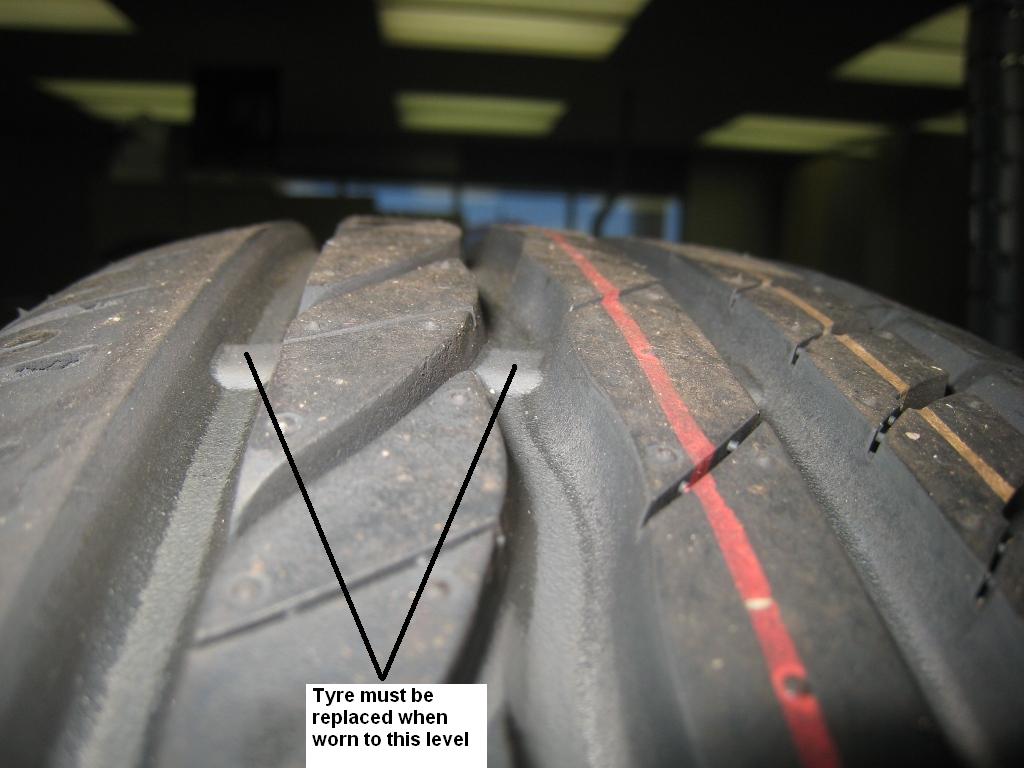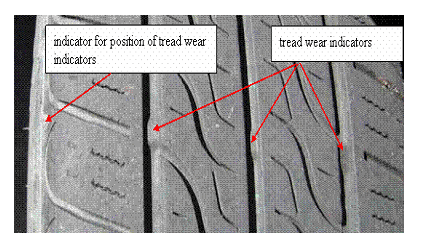


A driver's ability to control their vehicle depends on the traction between their tires and the road. Tires don't require tread designs or even much tread depth to deliver traction on dry roads. A practical example of this is the racing slicks used on stock cars and open-wheel racers that provide traction at over 200 mph. However, tires do require tread designs to generate traction on wet, slushy and snow-covered roads. Liquids can't be compressed and require time and energy to move them out of the way as our tires drive through them. Those same racing slicks would lose traction at amazingly slow speeds anytime something prevented them from maintaining contact with the road.
So a tread design is necessary to direct water and slush from between the tire and the road, as well as provide edges that bite into snow. But that's only half the equation; because we've seen that tread depth also contributes to how well the design does its job.
The air our tires encounter at highway speeds can easily be compressed and moved out of the way with relative ease. However the same isn't true of liquids. When water collects on the road surface during rainstorms, the water depth, vehicle speed and vehicle weight, as well as the tires' tread designs and tread depths collectively determine when and if the tires will be forced to hydroplane and how quickly they can stop a vehicle.
"Tire Rack's advice is that if rain and wet roads are a concern, you should consider replacing your tires when they reach approximately 4/32" of remaining tread depth."
A typical passenger car tire has about twenty square inches of total footprint surface and begins with about 1/3" of tread depth. While the majority of the footprint surface is made up of the rubber that grips the road, the remainder is the void of the grooves that make up the tread design. (See Photo #2)
In order to confirm how much wet traction worn tires sacrifice, members of the Tire Rack team measured the stopping distances from 70 mph (the typical speed limit of U.S. Interstate highways) with vehicles equipped with sets of new tires and compared them to tires with about 4/32" (3mm) of remaining tread depth, followed by sets with the legal minimum of 2/32" (1.6mm) depth. The differences surprised us! Vehicles equipped with the 2/32" minimum tire tread depth took about 100 more feet to stop and were still traveling at about 45 mph at the same distance the vehicles equipped with the 4/32" deep tires had already come to a complete stop!Obviously the tread will wear away over the life of the tire and the volume of its tread grooves will be reduced. While this occurs so slowly that it may not be noticed day-to-day, ultimately there will be a time when the driver will notice the car slip in the snow, hydroplane in the rain or simply not stop in as short a distance on wet roads.
The Tire Rack's advice is that if rain and wet roads are a concern, you should consider replacing your tires when they reach approximately 4/32" of remaining tread depth. Since water can't be compressed, you need enough tread depth to allow the rain to escape through the tire's grooves. If the water can't escape fast enough, your vehicle's tires will be forced to hydroplane (float) on top of the water, losing traction and increasing stopping distances.
Additionally, if snow-covered roads are a concern, you should consider replacing your tires when they reach approximately 5/32" of remaining tread depth to maintain good mobility. You need more tread depth in snow because your tires need to compress the snow in their grooves and release it as they roll. If there isn't sufficient tread depth, the "bites" of snow your tires can take on each revolution will be reduced to "nibbles," and your vehicle's traction and mobility will be sacrificed.
While replacing your tires before they are legally worn out may not appear the most economical practice, it is far less expensive than repairing your car if it can't stop in an emergency situation in less distance than the vehicle ahead of you!
No comments:
Post a Comment